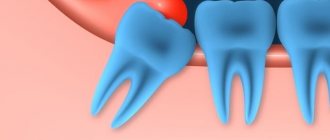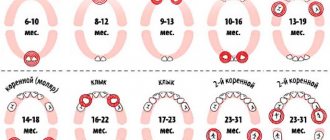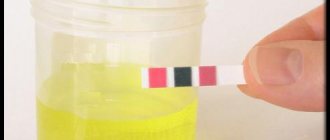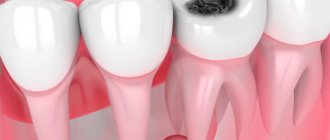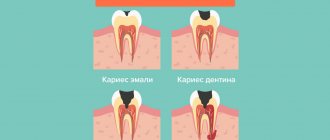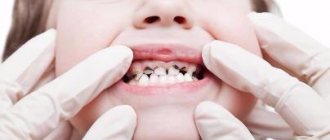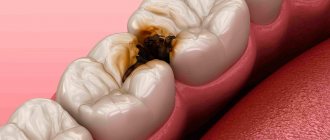Fibrous pulpitis is one of the types of chronic pulpitis. Its characteristic feature is the excessive growth of connective tissue fibers in the tooth cavity, which ultimately leads to impaired blood supply to the pulp and its death.
Seeking professional help for chronic fibrous pulpitis on time is the key to restoring the appearance and functional characteristics of the tooth. At the same time, an advanced disease can lead to the death of the pulp and the spread of the inflammatory process to the periodontium.
It is worth noting that chronic fibrous pulpitis can develop as a result of the lack of treatment for acute pulpitis, and it can also be a primary process without an acute stage. It can appear and develop on both primary and permanent teeth. Treatment of fibrous pulpitis involves surgery.
Filling made of light-curing material for classes I and V - 2,000 rubles.
Filling made of light-curing material in classes II, III, IV - 3,000 rubles.
Placing a temporary filling - 400 rubles.
Resection of the root apex (frontal group) - 6,500 rubles.
Resection of the root apex (chewing group) - RUB 9,000.
Mechanical and medicinal treatment of canals for periodontitis (1 canal) - 1,100 rubles.
Closing perforations (MTA) - RUB 6,500.
At CELT you can get advice from a dental specialist.
- The cost of a dental consultation is 1,000
- The cost of an orthodontist consultation is 2,000
Make an appointment
Etiology of fibrous pulpitis
The reason for the development of the chronic form of the disease is the opening of the coronal dental cavity during acute fibrous pulpitis
. It is accompanied by the outflow of exudate and some relief for the patient, since the pain that arose during its accumulation will subside. This type of pulpitis is called secondary. As for the primary one, it is an independent form of this pathological condition and develops in a closed tooth cavity. The reasons are a violation of the technique for treating advanced caries (namely, incorrect treatment of the dental cavity, application of a medicinal lining, or mechanical damage to the tooth when opening the pulp chamber).
Prices for services
| Name | Price |
| Consultation | For free |
| Treatment of pulpitis and periodontitis | |
| Mechanical and medicinal treatment of one canal | 1,100 rub. |
| Repeated mechanical and medicinal treatment of one canal | 500 rub. |
| Unsealing one root canal | 1,100 rub. |
| Filling one canal using vertical condensation method | 1,300 rub. |
| Filling one canal using lateral condensation method | 1,150 rub. |
| Temporary filling of one canal with medicinal paste | 500 rub. |
| Installation of intrachannel fiberglass pin | 1,450 rub. |
| Temporary chemical filling | 400 rub. |
| Light temporary filling | 450 rub. |
Forms of fibrous pulpitis
There are two forms of fibrous pulpitis: acute and chronic. Most often, the second occurs as a result of the first; in addition, exacerbations of chronic fibrous pulpitis
.
The chronic form can be called compensation, in which fibrous transformation of the nerve of the tooth occurs with a minimal amount of exudate. The process is characterized by the proliferation of connective tissue fibers in the dental canal and a decrease in the sensitivity of the dental nerve. It arises as a result of the reactivity of the body, which tries to adapt to the ongoing processes by changes in the structure of the pulp. The latter does not disintegrate.
Inflammatory processes of the pulp during this period eliminate acute pain. Most often, this is facilitated by tooth destruction under the influence of carious processes, which creates an outflow of fluid through the hole. Despite the fact that the pain symptoms in the chronic form are not severe, the tooth requires immediate treatment. Very little time will pass - and part of the pulp will die, its necrosis will begin, and purulent inflammatory processes will spread to the tissue around the tooth root. Result? Envelopment of the periosteum, development of flux and (often) tooth extraction.
Pulp anatomy
In the depths of the tooth, under the dentin layer, there is a pulp, which consists of soft, loose, fibrous connective tissue, dotted with blood and lymphatic vessels, as well as nerve endings running from the jaw along the root canal through the apical foramen.
Pulp (lat. pulpis dentis) is the “heart” of the tooth, reliably protected by powerful dental walls of bone tissue from the effects of external factors, nourishing the tooth with minerals, ensuring its growth, restoration, and vitality. It is important to note that the pulp is not only a space of soft tissue (pulp chamber), but also the dental canal connected to it. The pulp chamber is a loose, amorphous colloidal system containing loose, fibrous connective tissue, as well as a large number of elastin and collagen fibers. The cellular composition of this system contains histocyotes, mast cells, macrophages, as well as fibroblasts that produce collagen and provide intercellular communication. The surface layers of the fibrous structure of the pulp contain odontoblasts - cells with long processes located in the dentinal canals. These processes make dentin sensitive to any irritants. Stellate cells are located a little deeper, and the central layer contains collagen and nerve fibers and blood vessels. If an inflammatory process begins in the pulp, then leukocytes appear in the structure, lymphocytes and plasma cells are activated.
In addition to providing the tooth with nutrition, the pulp performs several other important functions. Plastic, responsible for the delivery of “building” proteins, is ensured by the activity of odontoblasts involved in the formation of dentin: before the eruption of the primary tooth, after eruption - the secondary one. The protective function of the pulp is carried out thanks to macrophages, lymphocytes and fibroblasts. Macrophages “recycle” dead cells and, together with lymphocytes, are responsible for immune reactions, and fibroblasts produce and maintain the necessary balance of the intercellular substance of the pulp, which is responsible for metabolic processes in it. In general, the protective function of the pulp is to create a barrier for the penetration of pathogenic bacteria that have entered through the dentin further, along the root canal into the periodontium, and then to the soft tissues surrounding the tooth. In addition, the protective function includes the regeneration of the so-called replacement (tertiary) dentin: when caries occurs, this dentin prevents its spread deep into the tooth. The trophic function of the pulp, which affects the metabolism and nutrition of the tooth, supporting the vital activity of tooth enamel, is ensured by the activity of a developed vascular system, characterized by thin vessel walls, high blood flow speed and, accordingly, higher pressure than in other organs. The sensory function of the pulp is carried out due to the activity of a large number of nerve fibers, which, like a fan, diverge from the apical foramen to the periphery of the pulp.
Very often the pulp is called the “dental nerve” because its sensitivity to any irritants is so high that inflammation, as a response to a bacterial, viral, or infectious attack, occurs almost immediately. Such inflammation in medical terminology is called pulpitis.
Clinical manifestations
Often this type of pulpitis is practically asymptomatic, which is why the patient does not immediately turn to the dentist. But for most cases the following is typical:
- heaviness in a sore tooth;
- pain reactions in response to irritants;
- nagging pain that intensifies when exposed to irritants and does not go away for a long time;
- bad breath due to poor hygiene;
- the presence of a deep carious cavity with softened dentin inside.
With an exacerbation of the chronic form, pain occurs spontaneously, intensifies at night and spreads to the entire jaw.
It is important to understand that fibrous pulpitis is often detected by a dentist during an examination. This happens when carious cavities are “hidden”: for example, located under the gum. In such places they are inaccessible to irritants, so the patient does not feel severe pain that would force him to seek professional help. One more point must be taken into account: if the carious cavity is combined with the tooth cavity, the patient does not feel such a specific symptom as heaviness in the tooth. Moreover: he does not feel any discomfort at all, and therefore does not seek treatment. And this is very bad, since the lack of treatment will lead to destruction of dental tissue, damage to the periosteum and the development of gumboil, the treatment of which often involves tooth extraction.
Price
The cost of treating pulpitis is influenced by many factors. First of all, these include the form and stage of pulpitis, diagnostic measures that make it possible to establish an accurate diagnosis and choose the most appropriate treatment method. In addition, the medications, materials, equipment and instruments used during treatment are important. Not the least important role is played by the qualifications of the doctor, additional consultations with specialists, as well as medical measures accompanying the main treatment, if necessary.
Many patients think that toothache is a temporary “little thing in life” that can be overcome with the use of modern painkillers. But this illusion quickly dissipates as soon as a person experiences unbearable pain... Remember that the sudden appearance of toothache is in all cases a serious signal warning of the presence of some kind of pathology in the maxillofacial system. In many cases, this pathology turns out to be pulpitis - a disease that, if not treated in a timely manner, can lead to many complications, including tooth loss. But only a qualified doctor can determine the exact cause after conducting a thorough diagnostic examination. Therefore, visit the dental office as soon as possible. Your efficiency, combined with modern treatment methods and the professionalism of the doctor, is a guarantee that the disease that caused the pain will be completely cured and will not deprive you of the beauty of a full smile.
According to antiplagiat.ru, the uniqueness of the text as of October 16, 2018 is 97.5%.
Key words, tags: caries, periodontitis, periodontitis, deep caries, tooth extraction
1 Therapeutic dentistry. Dental diseases: textbook: in 3 hours / ed. E.A. Volkova, O.O. Yanushevich. - 2013. - Part 1.). 2 https://mkb-10.com * Images: - Domenico Ricucci, Jose Siqueira, “Endodontics. Clinical and biological aspects”, Publishing house “Azbuka”, Moscow, 2015. A book for dentists and endodontists. Edition in Russian, translated from English, 415 pages, 1682 illustrations, hardcover. The original edition of the book “Endodontology: An Integrated Biological and Clinical View (Ricucci, Domenico and Siqueira Jr, Jose)” was published in 2013. — Database of clinical photo protocols of the Dental Clinic Dr. Edranov; Personal archive of S.S. Edranova.
Diagnostics
Fibrous pulpitis must be differentiated from the following diseases:
- deep caries;
- acute focal pulpitis;
- chronic gangrenous pulpitis.
It is necessary to understand that only a qualified, experienced dentist can make a correct diagnosis after an examination and a series of diagnostic studies. Here are just a few signs that help distinguish one disease from another:
| Symptom | Caries | Focal pulpitis | Gangrenous pulpitis | Fibrous pulpitis |
| Pain | Short-term pain when exposed to irritants of different nature | Severe pain that lasts a long time even after the irritant is eliminated | Long-term painful symptoms of aching nature from irritants of different nature | Aching pain that is mild, moderate pain when exposed to irritants |
| Type of defect | Carious cavity with food fragments and softened dentin inside | Large and deep carious cavity with a large amount of dead dentin | Large and deep carious cavity with a large amount of dead dentin | A large carious cavity filled with destroyed dentin. Violation of the tightness of the dental cavity |
In order to correctly make a diagnosis, the dentist conducts a visual examination of the oral cavity, prescribes radiography and electroodontodiagnostics. The inspection reveals the following:
- severe pain when probing the tooth cavity;
- pulp bleeding;
- severe pain when percussing the tooth;
- reaction to a thermal test.
X-ray examination reveals the presence of communication between the carious and dental cavities, and sometimes the expansion of the periodontal gap.
How is the diagnosis made?
An oral examination alone is not enough to make a diagnosis. The dentist, interviewing the patient, tries to find out as much information as possible about the disease. He pays great attention to such issues as:
- When did the pain start?
- How long does it last?
- Did your tooth hurt before?
- What reasons provoke it?
- At what time does it occur?
- What calms her down?
To complete the diagnosis, the following data from clinical studies can be considered reliable signs of pulpitis:
- Thermometry;
- Electroodontodiagnostics;
- Probing;
- Percussion;
- X-ray.
A thorough history taking and clinical examination allows the dentist to choose a rational treatment method. Clinical manifestations of dental pulpitis may be similar to other inflammatory diseases. And then the doctor will need to differentiate from them.
Reviews about our doctors
I am very grateful to Evgeniy Borisovich Antiukhin for removing my three eights.
Especially considering that the lower tooth was not the simplest (it was located in an embrace with a nerve). The removal took place in 2 stages, one tooth under local anesthesia, two under general anesthesia. I had no idea that wisdom teeth could be... Read full review Sofia
28.12.2020
Words cannot express my gratitude to Elena Nikolaevna Kiseleva. This is the best doctor in the world. I got an appointment after many years of being ignored by the dentist’s office and with a bitter experience of treatment in another paid clinic, the mistakes of which had to be corrected in the first visits. Thank you for this... Read full review
Roman Stanislavovich Sh
25.07.2020
Treatment of fibrous pulpitis
As already mentioned, treatment of chronic fibrous pulpitis is carried out using surgical methods. It is aimed at eliminating the source of inflammation, preventing the spread of the disease and restoring the appearance and functionality of the tooth.
One of the methods of treating chronic fibrous pulpitis is vital extirpation, which is performed under local anesthesia. The procedure consists of several stages:
- removal of carious cavity tissues;
- carrying out treatment using antiseptic drugs;
- removal of pulp first from the coronal and then from the root part of the tooth;
- root canal filling;
- tooth filling.
All these manipulations require one visit to the dentist and are considered gentle and physiological. But if the patient has allergic reactions to local anesthetics or root canal obstruction, devital extirpation is required. It is carried out in two steps, in the first of which the pulp is opened and a special paste is applied to it, followed by the installation of a temporary filling. The second measures are carried out after 1–10 days and consist of removing dead pulp, filling canals and teeth. Experienced dentists at the CELT clinic treat fibrous pulpitis, achieving excellent results.
Is it possible not to perform tooth depulpation?
Yes, in the early stages of the development of pulpitis, it is quite possible to treat it without removing the nerve bundle. But to do this, you should go to the doctor at the first signs of the disease, and not wait for it to go away on its own.
If possible, one should try to avoid pulp removal, since teeth without a nerve become more fragile and vulnerable to the action of bacteria and negative external factors. Moreover, in teeth depulped during the treatment of pulpitis, the enamel may lose its natural shine and whiteness.
If a person goes to the clinic for treatment of pulpitis, at a stage when the inflammation has already completely affected the nerve bundle, the nerve of the tooth will have to be removed. The dentist will remove the pulp from the tooth with a special tool, after which he will thoroughly rinse the tooth canals. We will describe in detail how this process works below.
Take a short test and calculate the cost of treatment!
Take a short test
- Which teeth have caries?
- Visual assessment
- Reaction to stimuli
- Cost calculation
×
Manukyan Artavazd Genrikovich
Chief physician of the clinic
